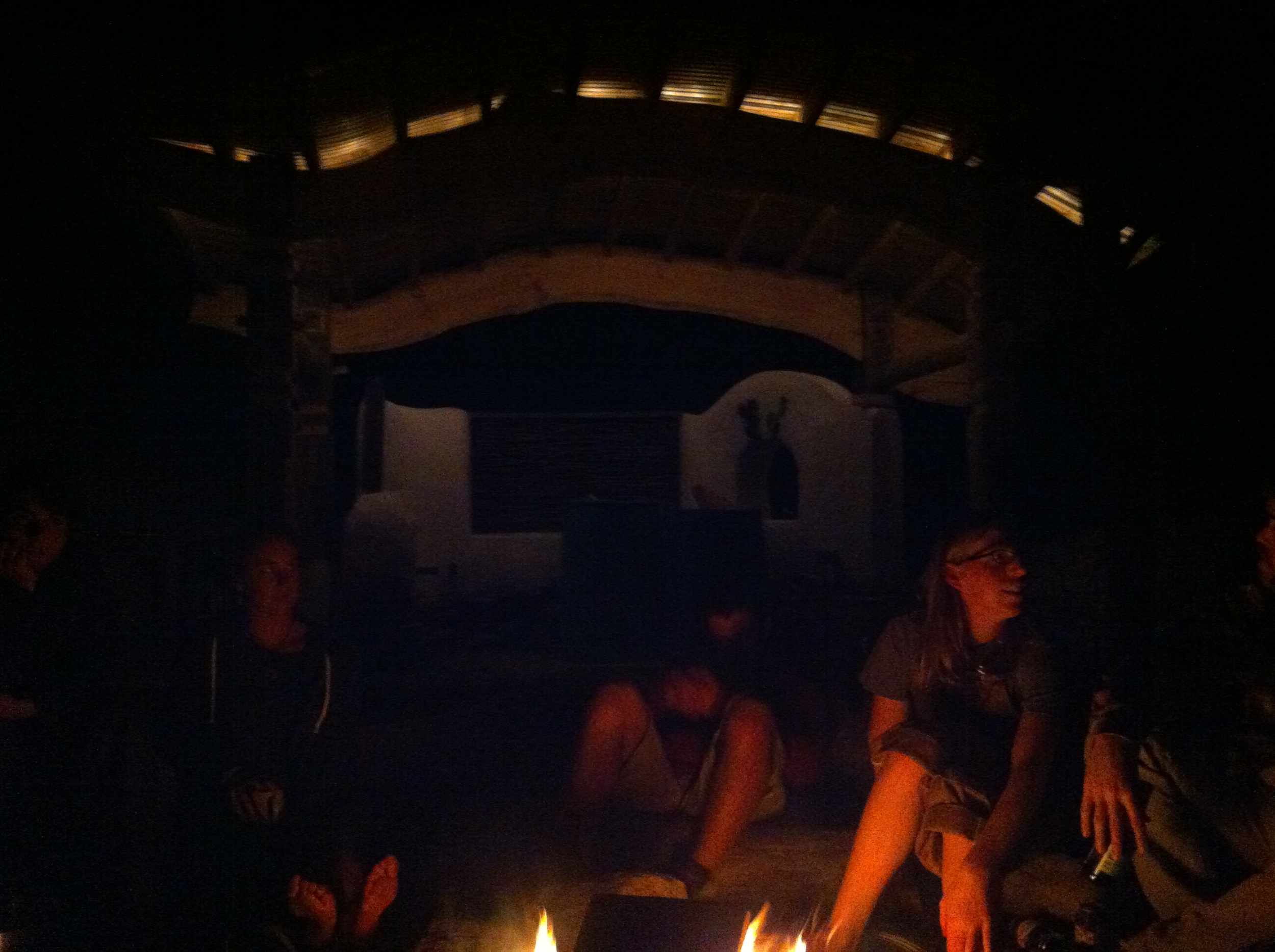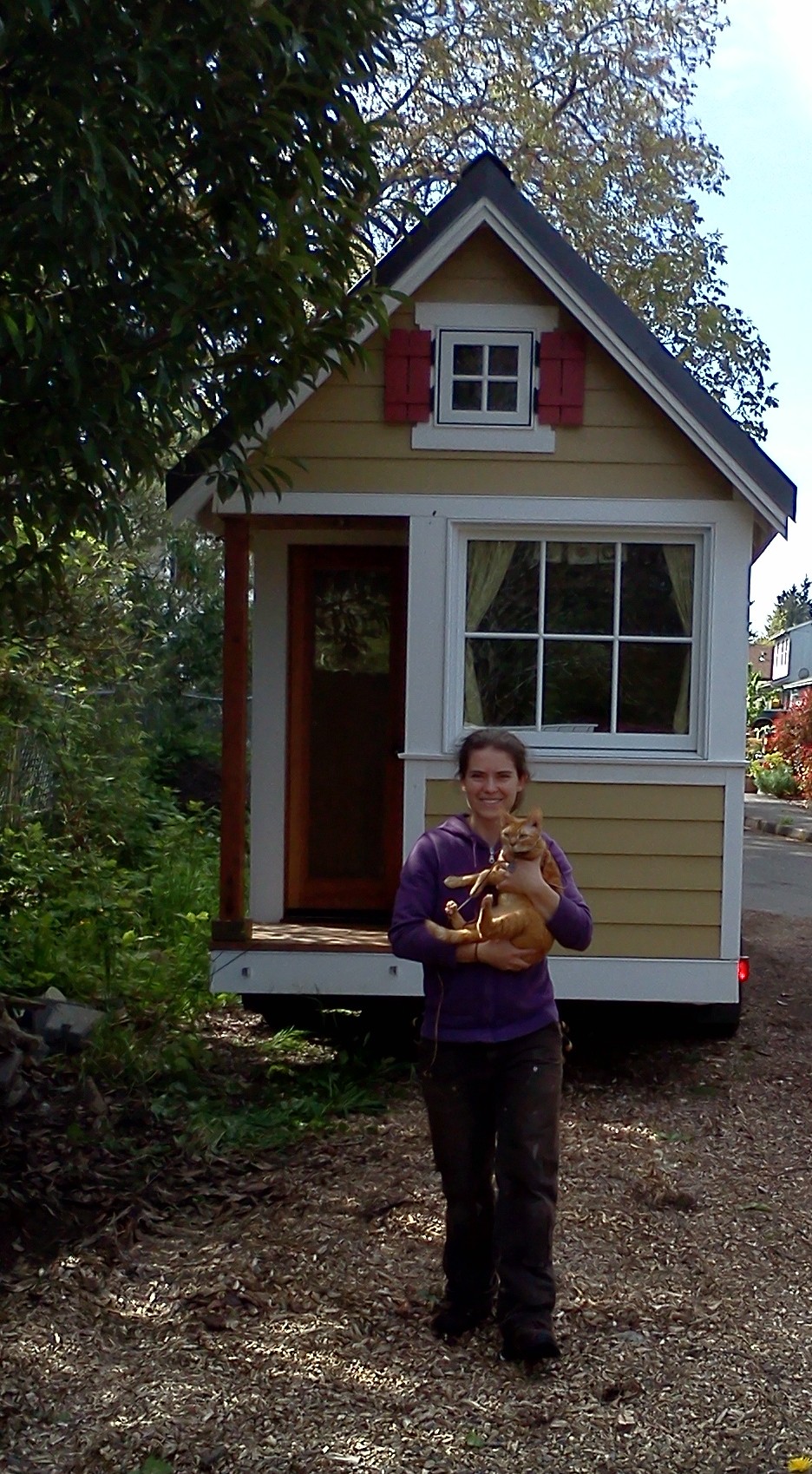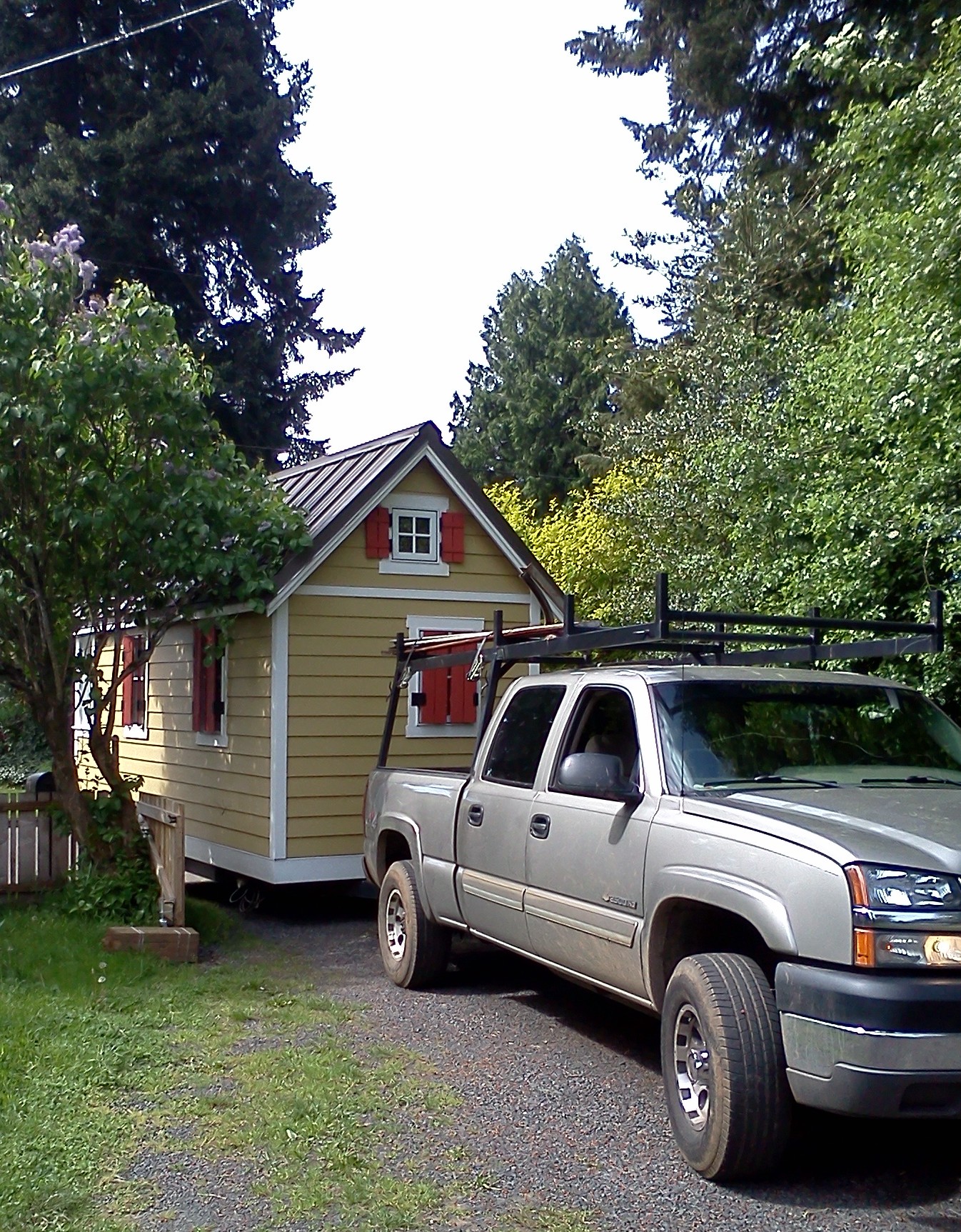 On Day 6 of Yestermorrow's Tiny House Design-Build we began sheathing the walls with CDX plywood. We're sheathing the walls flat so that the plywood creates sheer panels, which helps to keep the walls square while we install them. (See more photos in the Day 6 Slideshow.)
On Day 6 of Yestermorrow's Tiny House Design-Build we began sheathing the walls with CDX plywood. We're sheathing the walls flat so that the plywood creates sheer panels, which helps to keep the walls square while we install them. (See more photos in the Day 6 Slideshow.)
Since the long walls are being built in 3 sections and we have plenty of brute strength amongst the 16 of us, the panels won't be too heavy to lift into place even once they are sheathed. We decided to use 3/8" plywood to save weight since other tiny housers have done this. Unfortunately, the plywood has more warps and bows than we'd like to see so most of us have decided we'd rather use 1/2" for our little homes. (It may be that 3/8" plywood is higher quality on the Best Coast and this is another East Coast - West Coast difference.)
Now that we have the trailer level we can use it as a work surface. Our wall sheathing process involves snapping a straight line 3 1/2" from the edge of the trailer, toenailing the bottom plate of the wall to the subfloor along this line, squaring up the wall, and attaching the plywood, using the glue and screw method. Because this little house is not built down into the trailer frame we are running our plywood an extra 4 3/4" below the bottom plate so that it will cover the floor system (3/4" AvanTech subfloor, 3 1/2" pressure treated joists, and 1/2" pressure treated undercarriage). We also cut out most of the windows, using a circular saw to make plunge cuts. The windows we didn't manage to get cut out before it was time for wall raising will need to be finished with a reciprocating saw.
We got the walls almost ready to raise in the morning and after lunch I did a presentation on building science basics, energy, and systems. Afterwards we did our first wall raising and got three of the wall sections up. It's always such a thrill to see the first walls go up!
Thankfully, we set up the schedule with a 24 hour break from Saturday evening to Sunday evening, which will be a good chance for everyone to recharge. Perfect for a Saturday evening bonfire and a sing-along with a few (handmade!) instruments. It was an action-packed week and we've got another one ahead of us!









